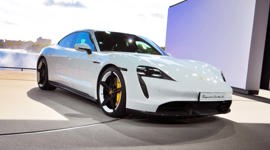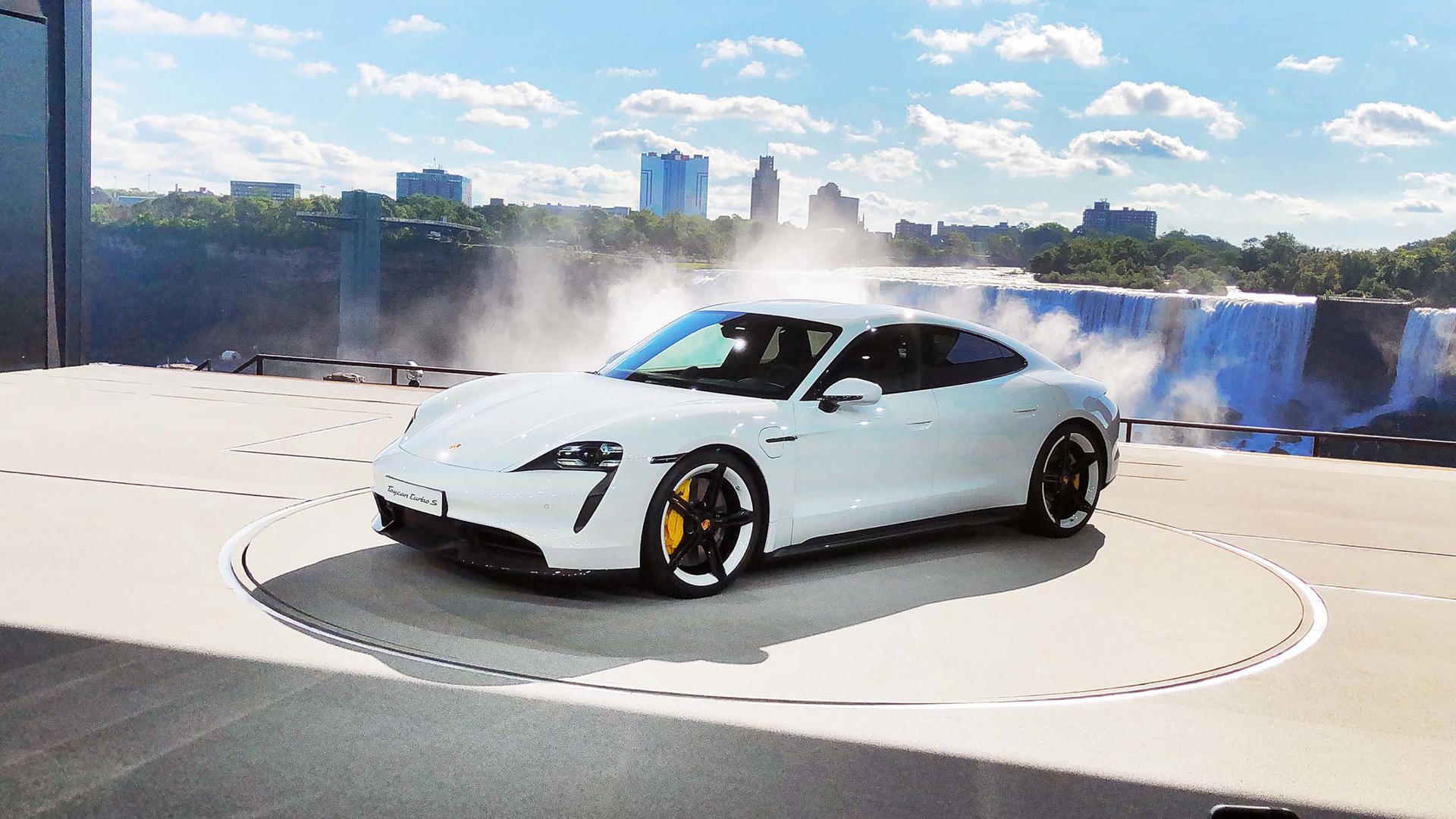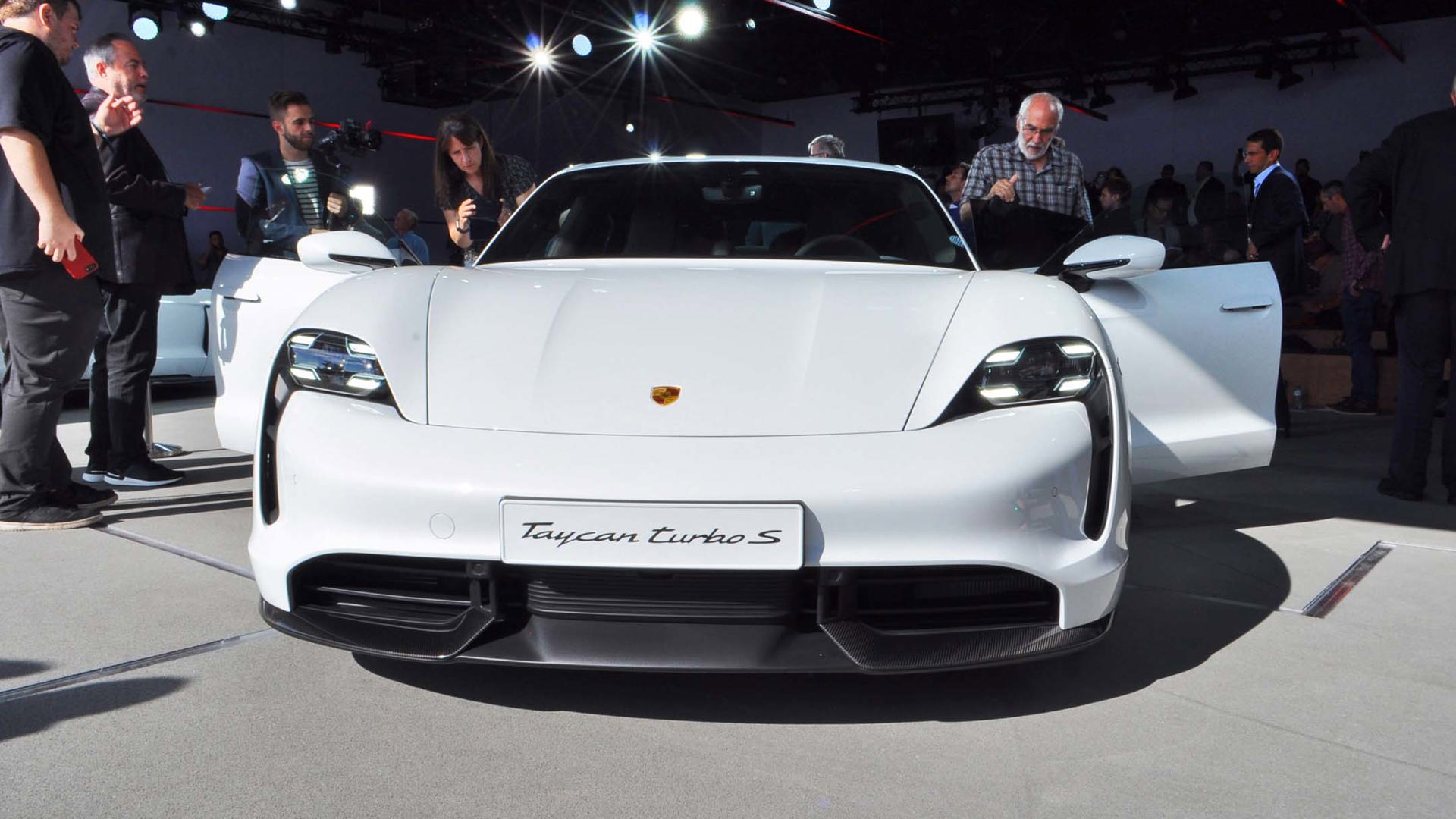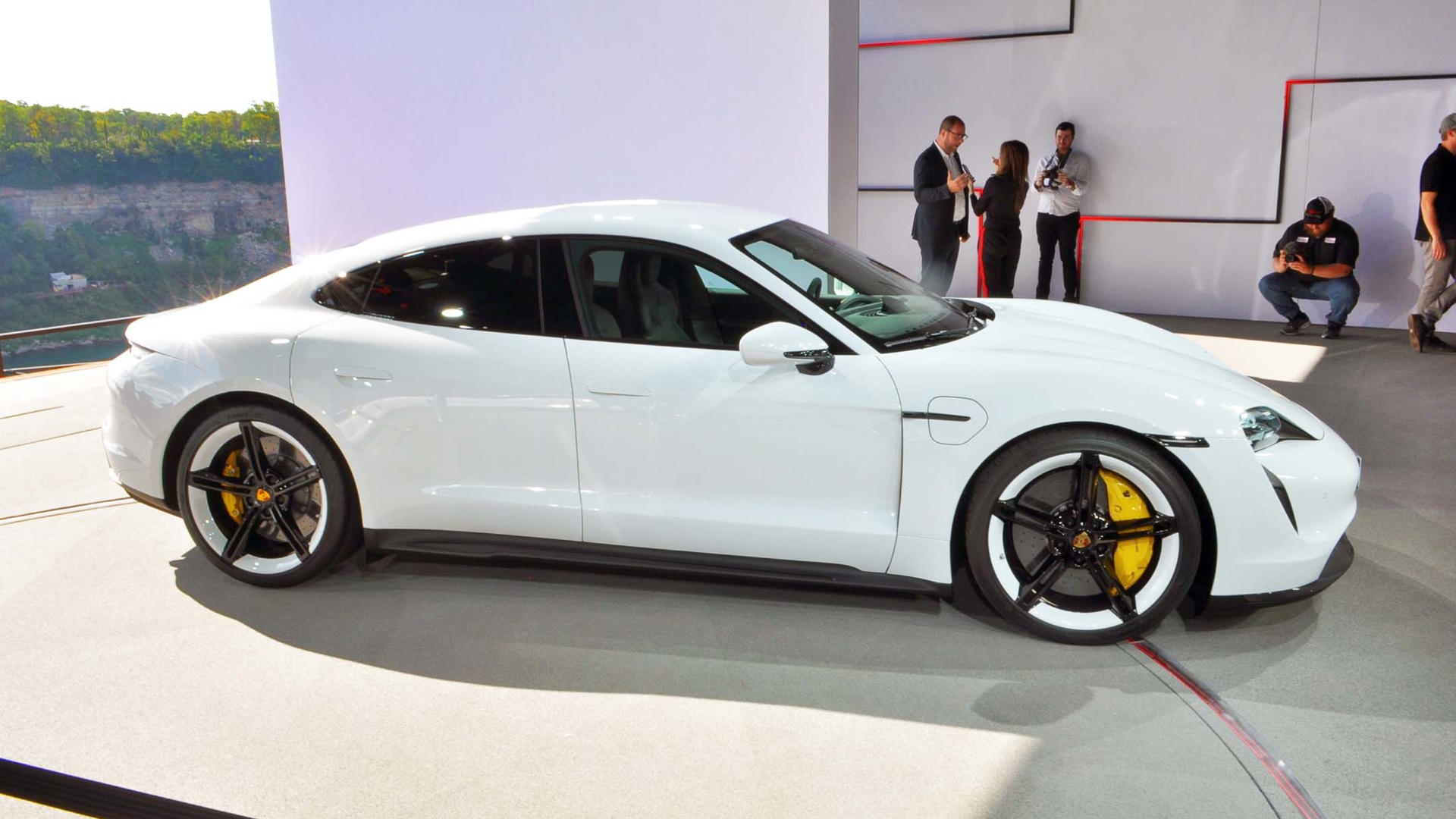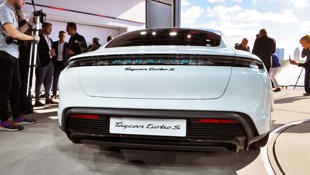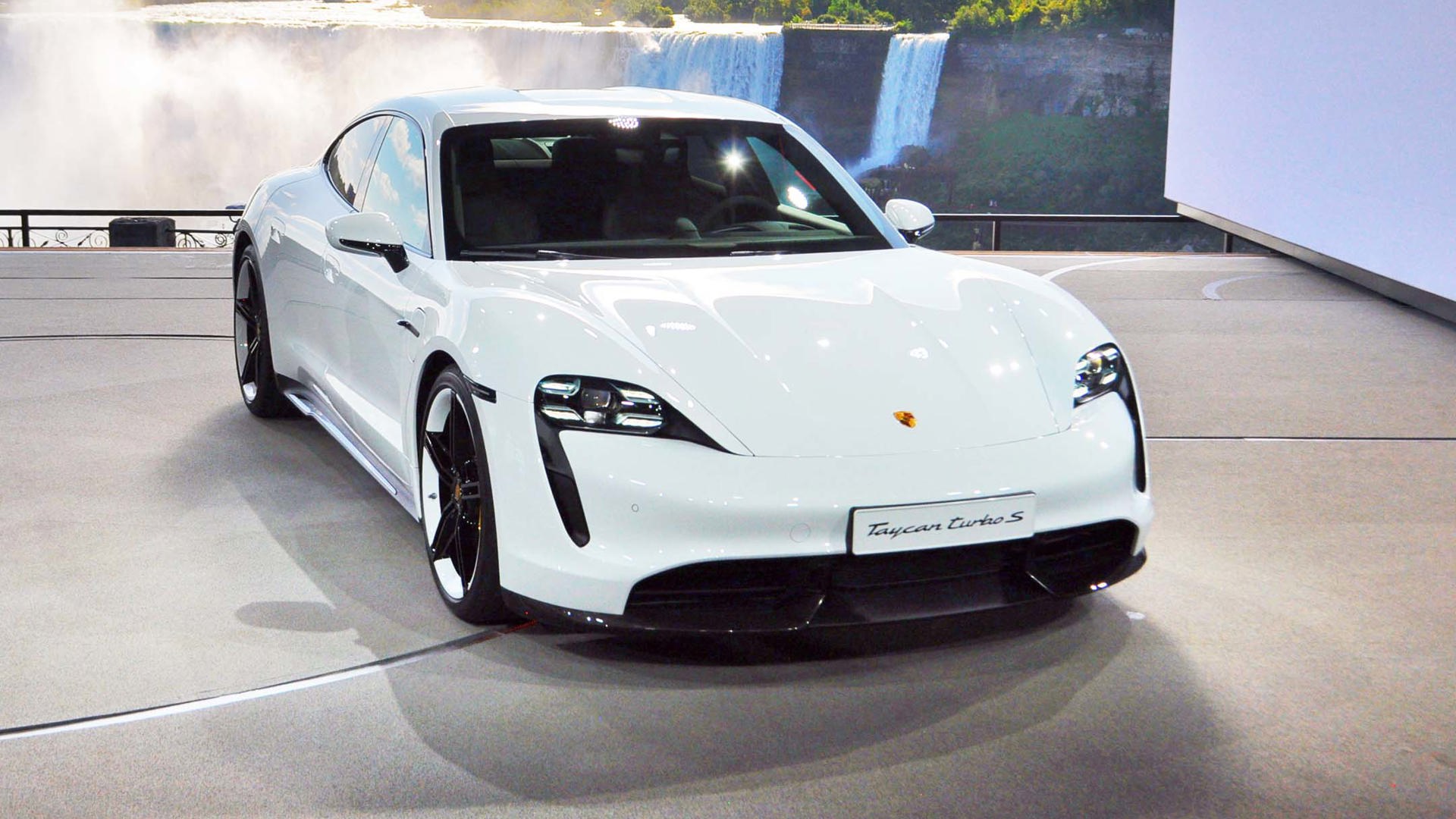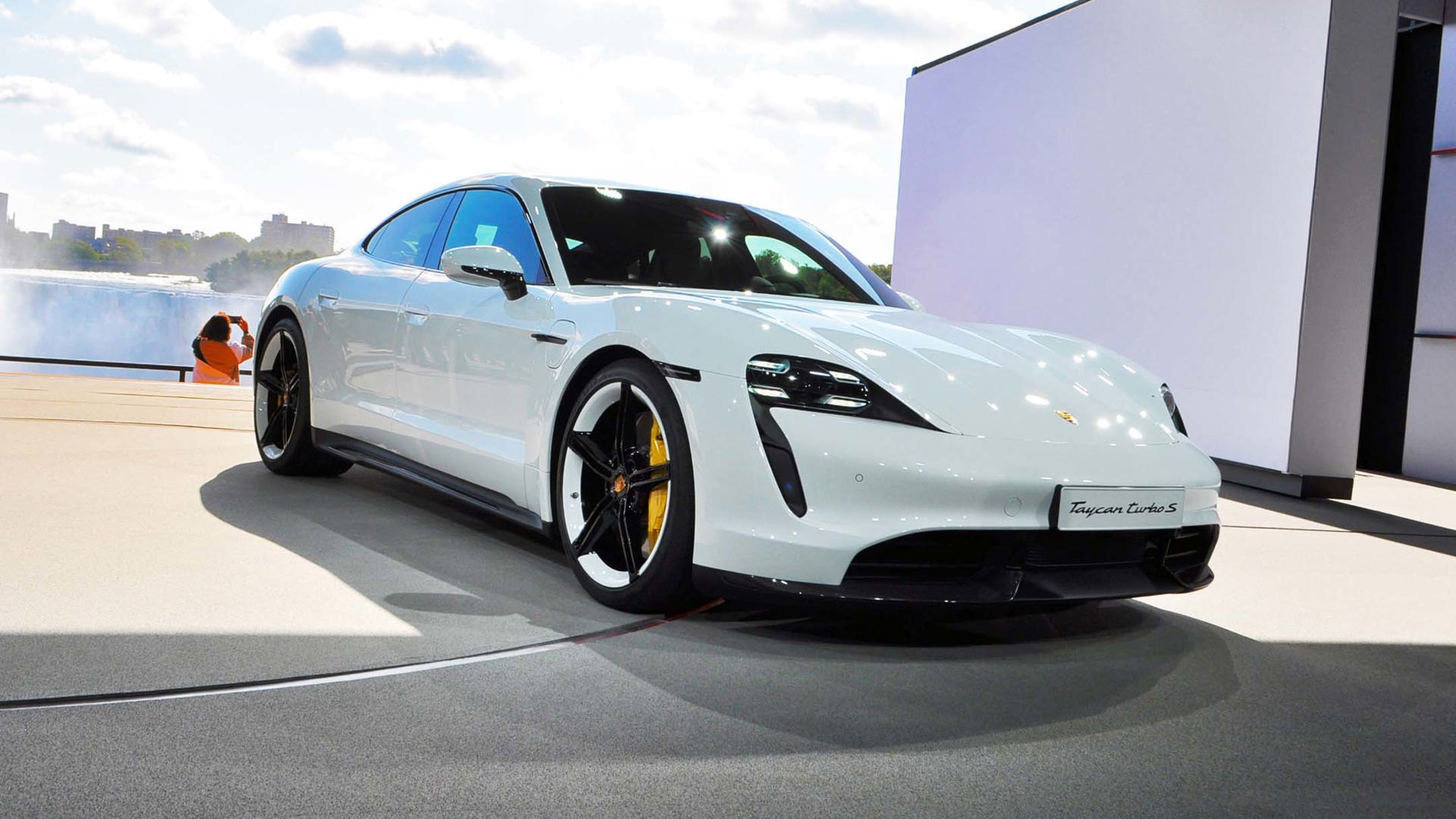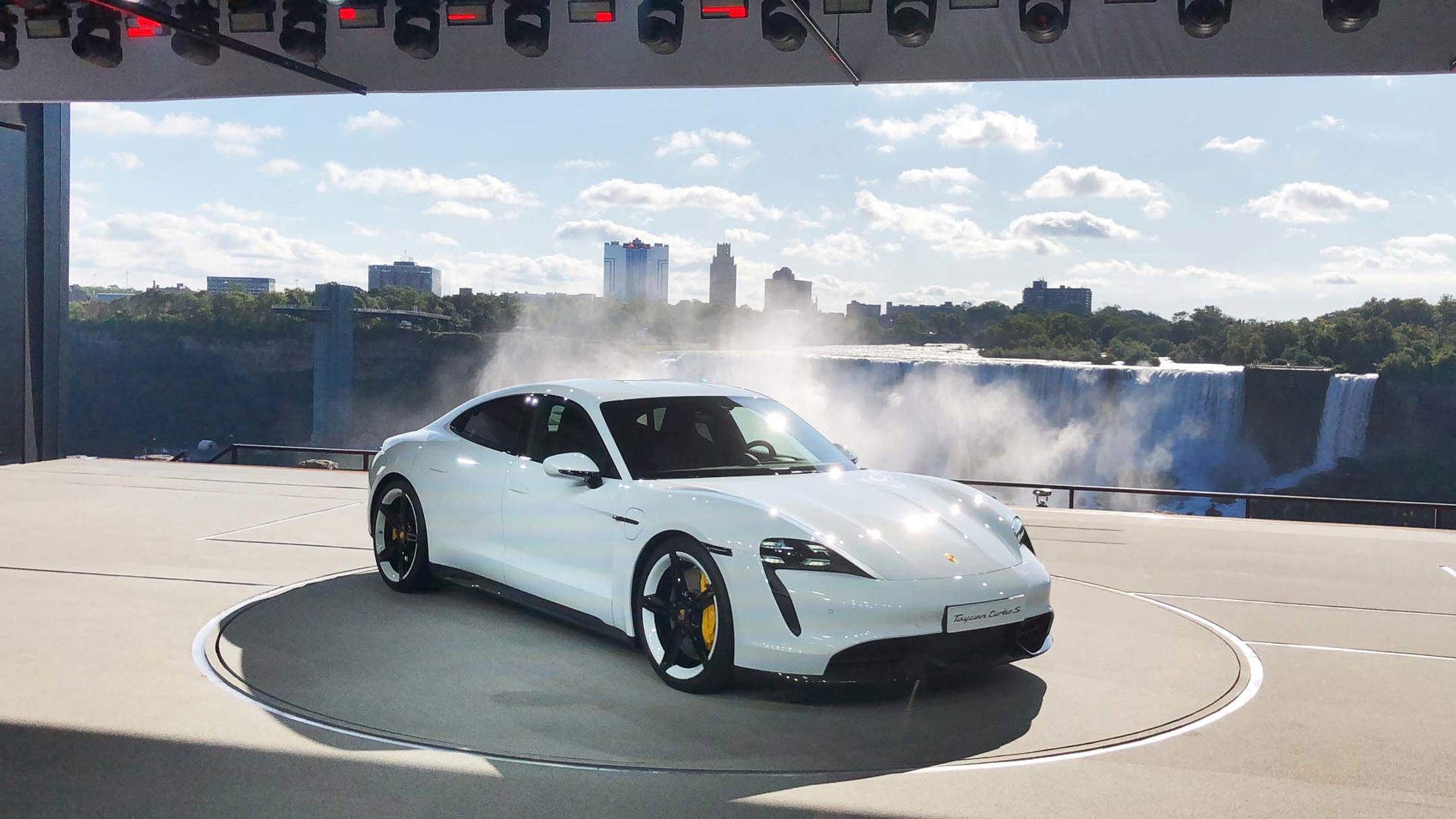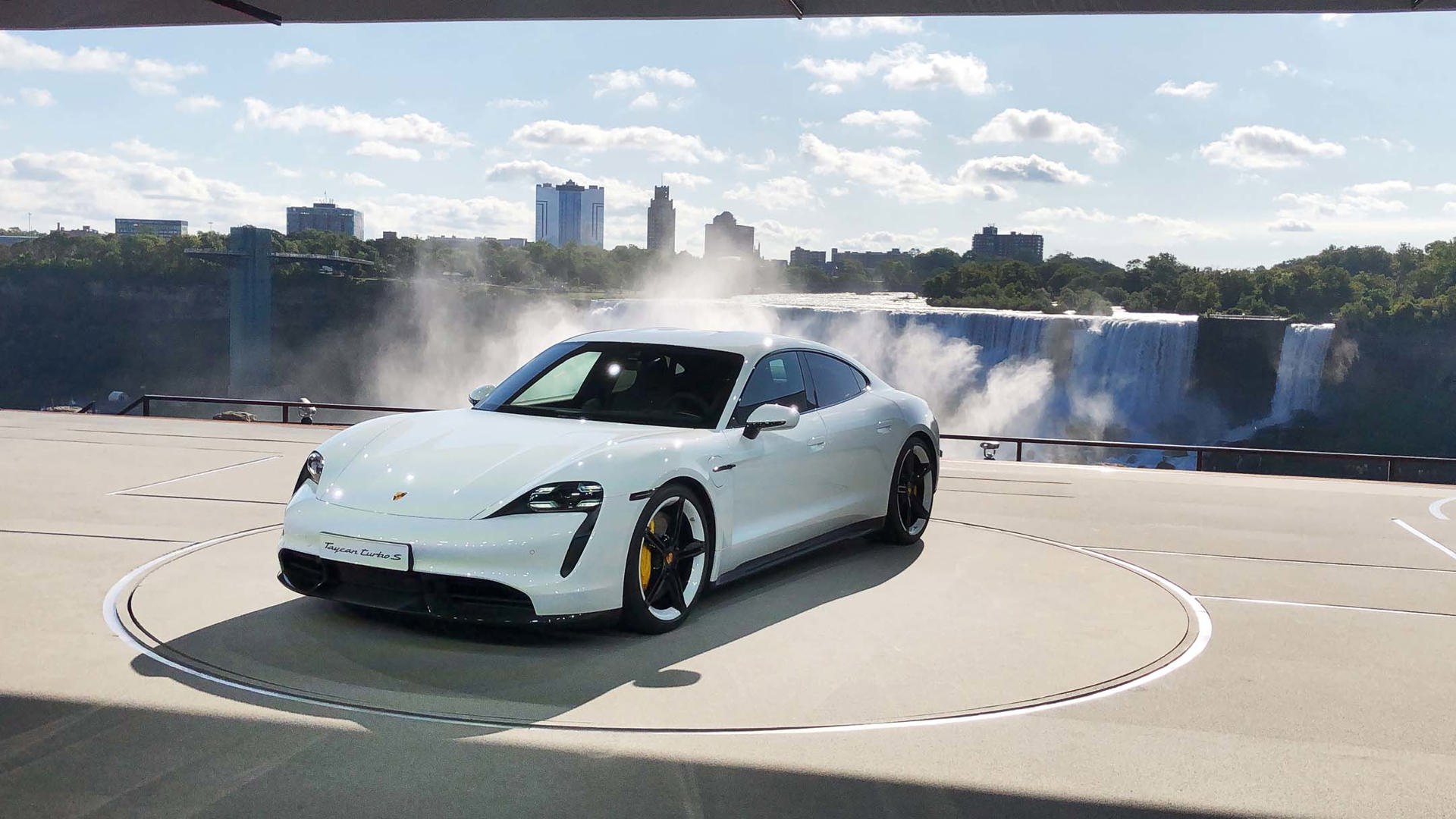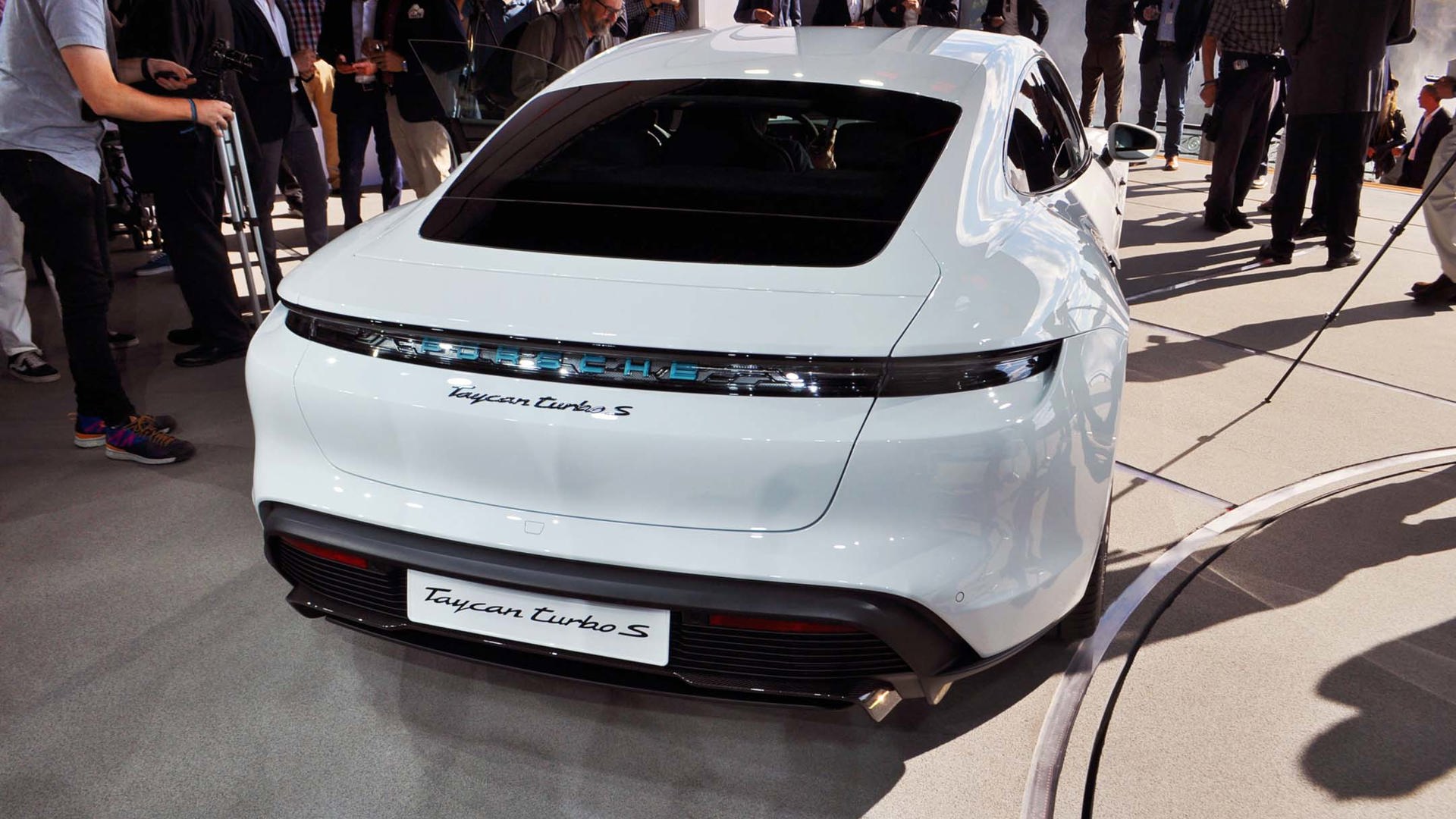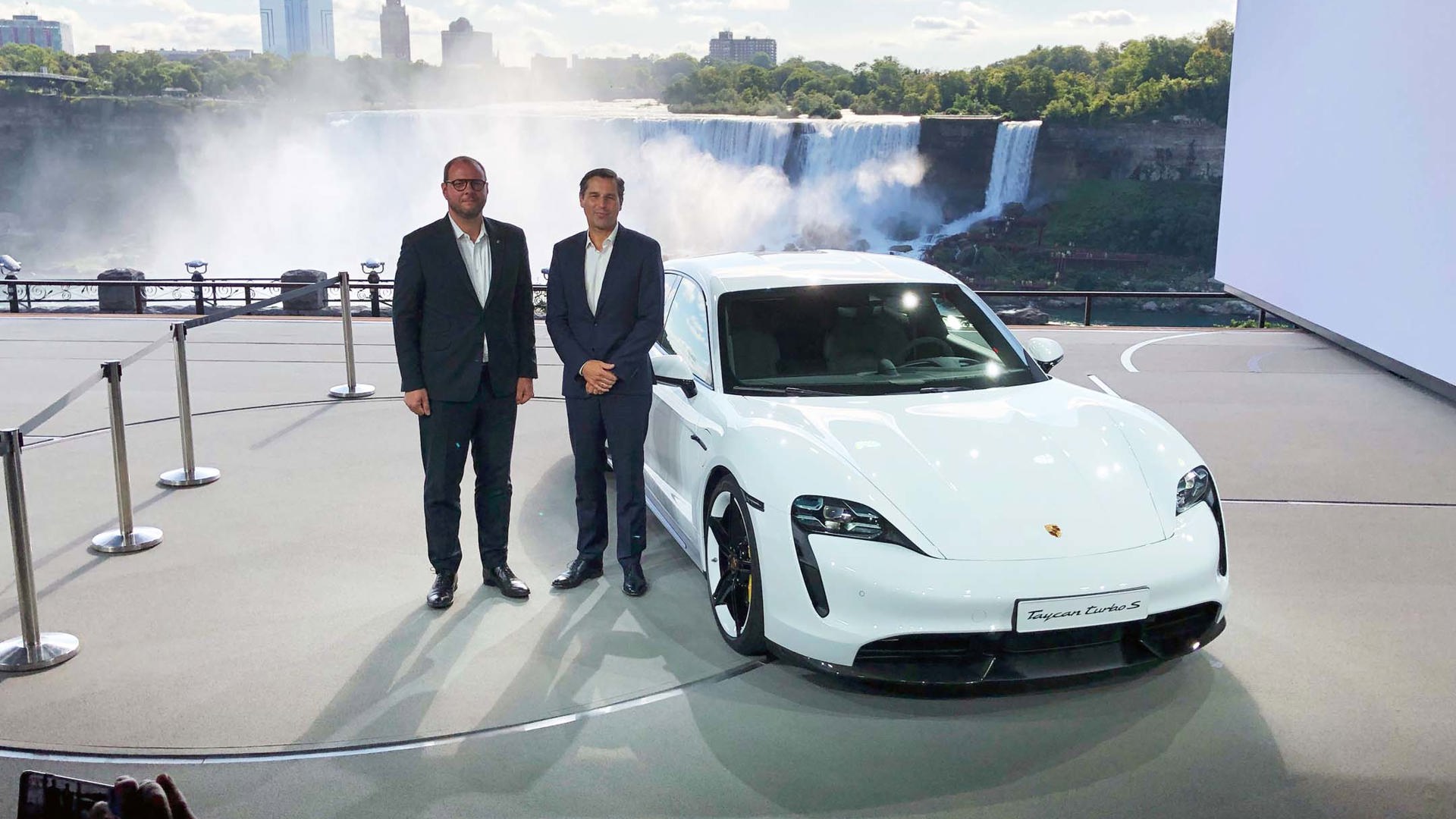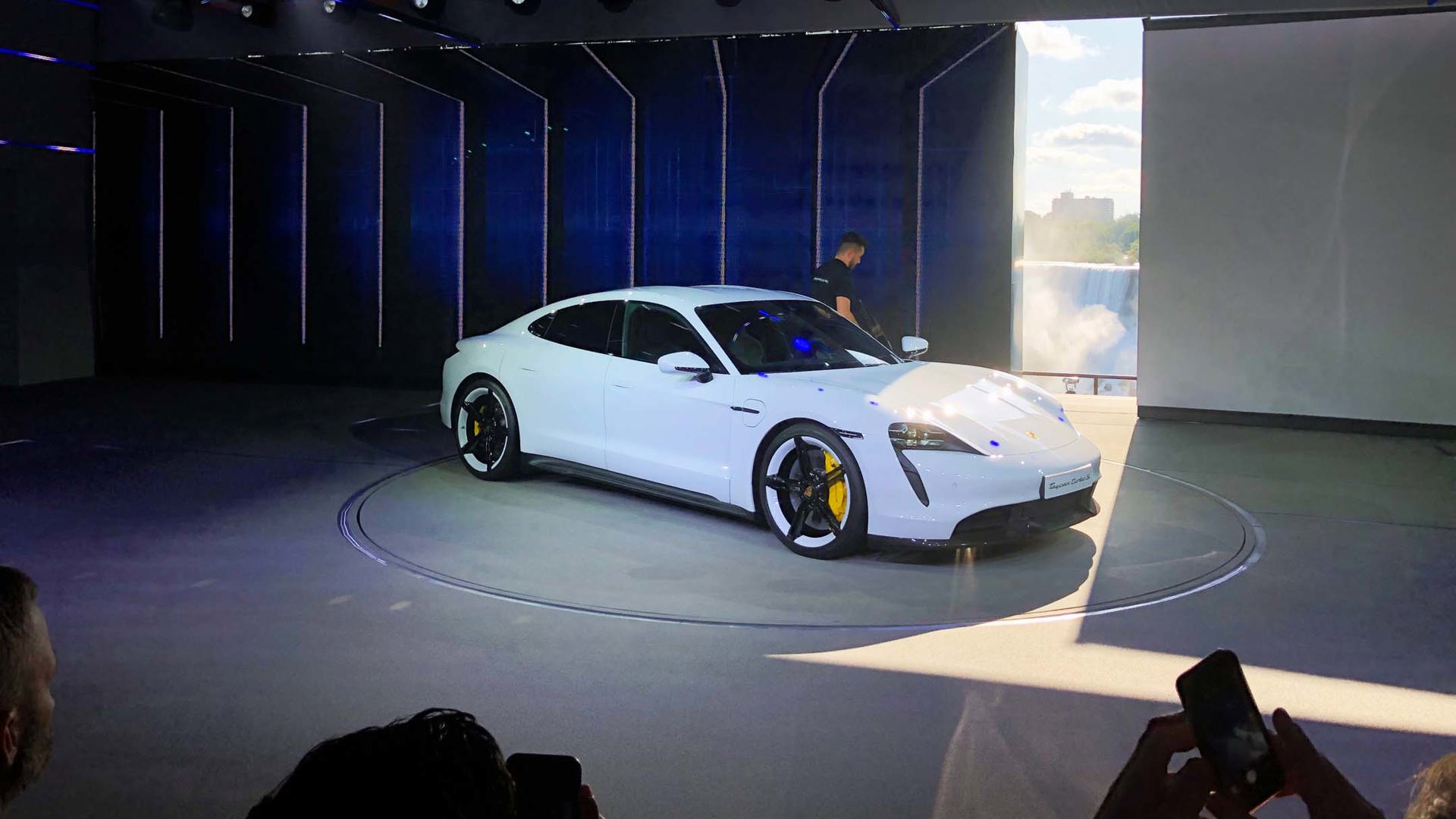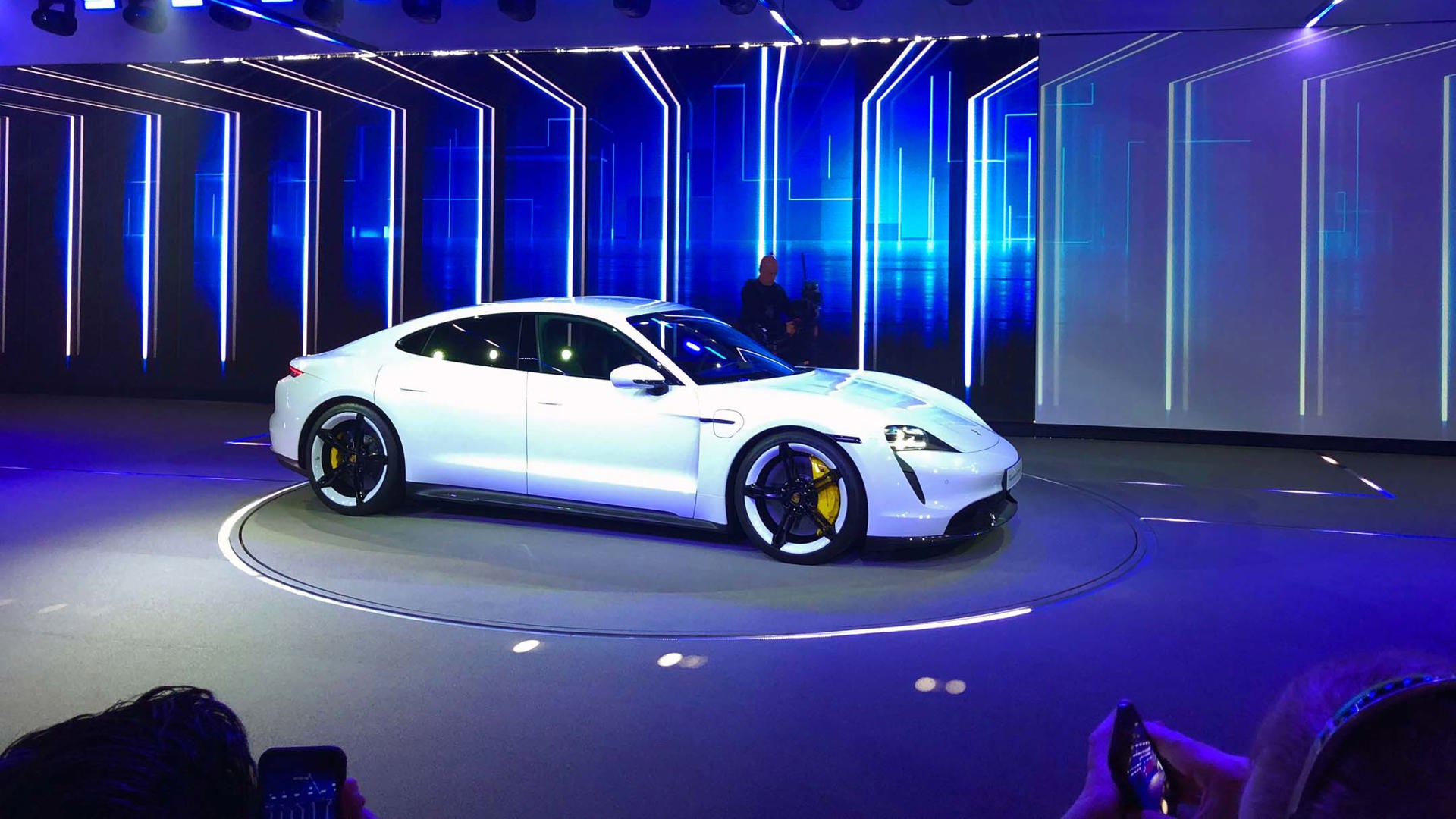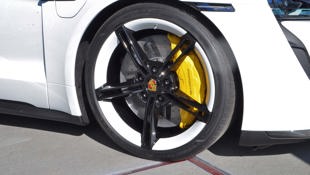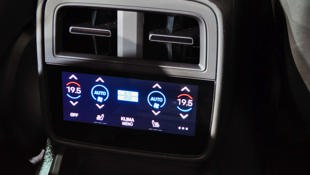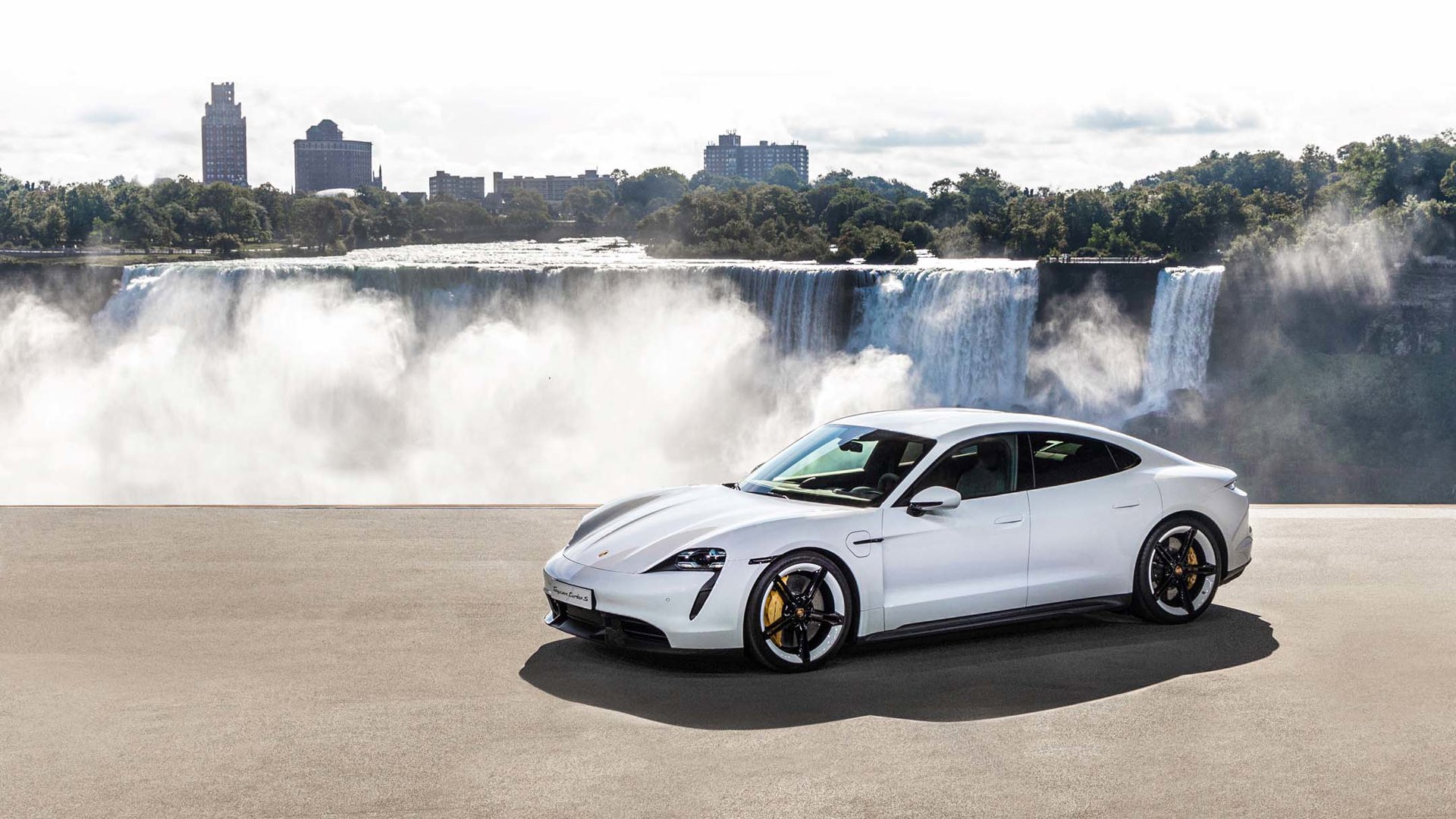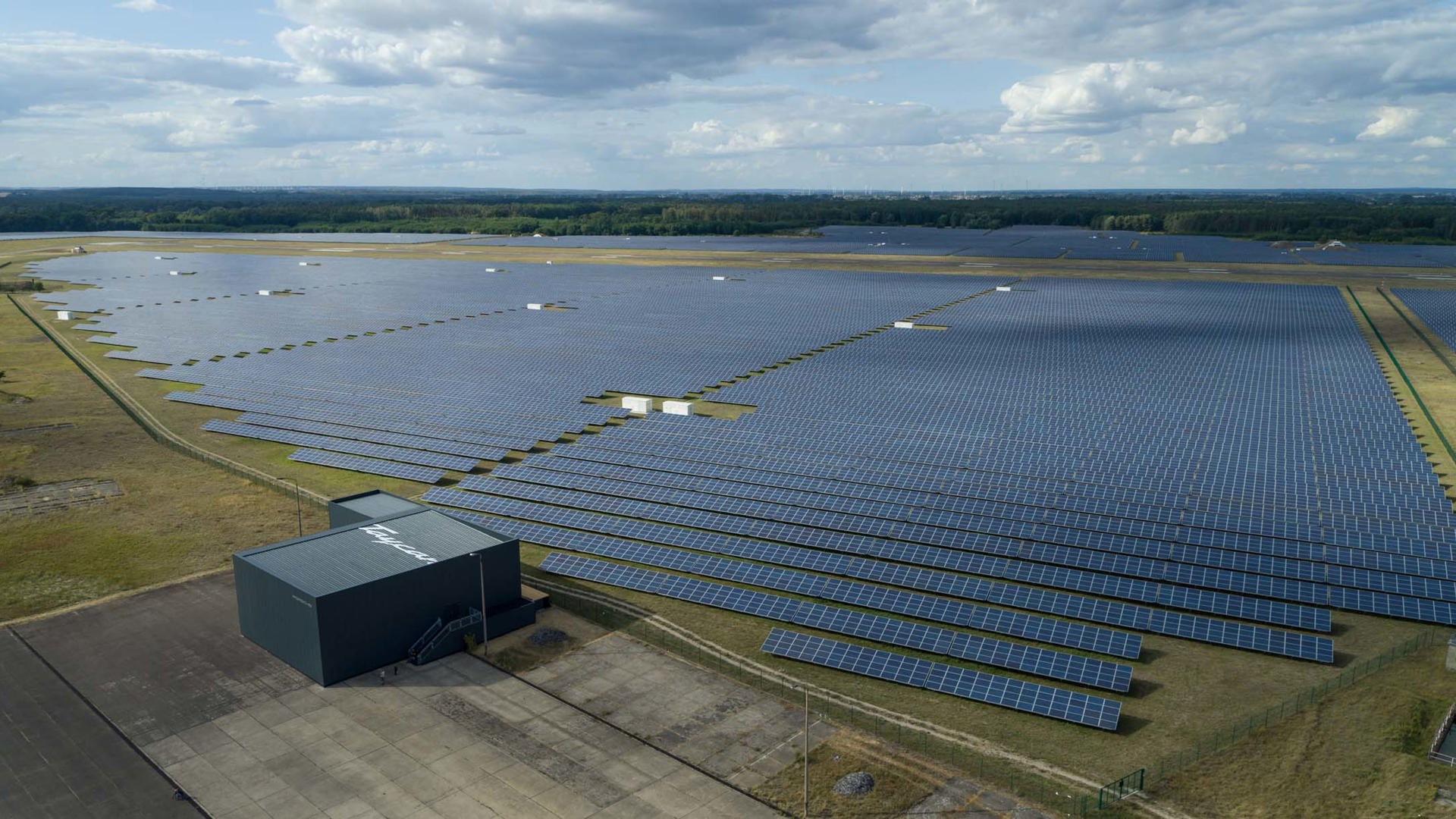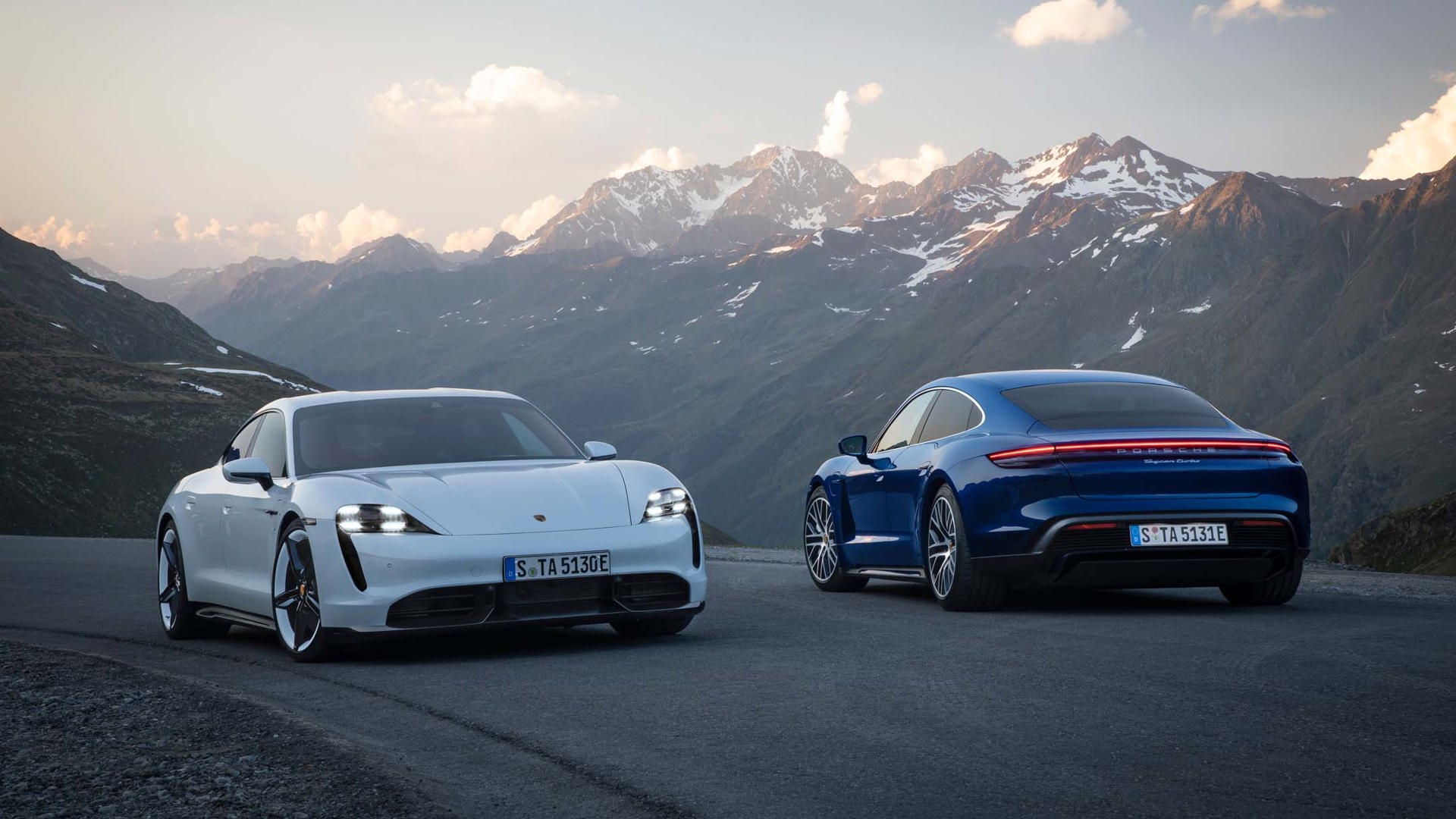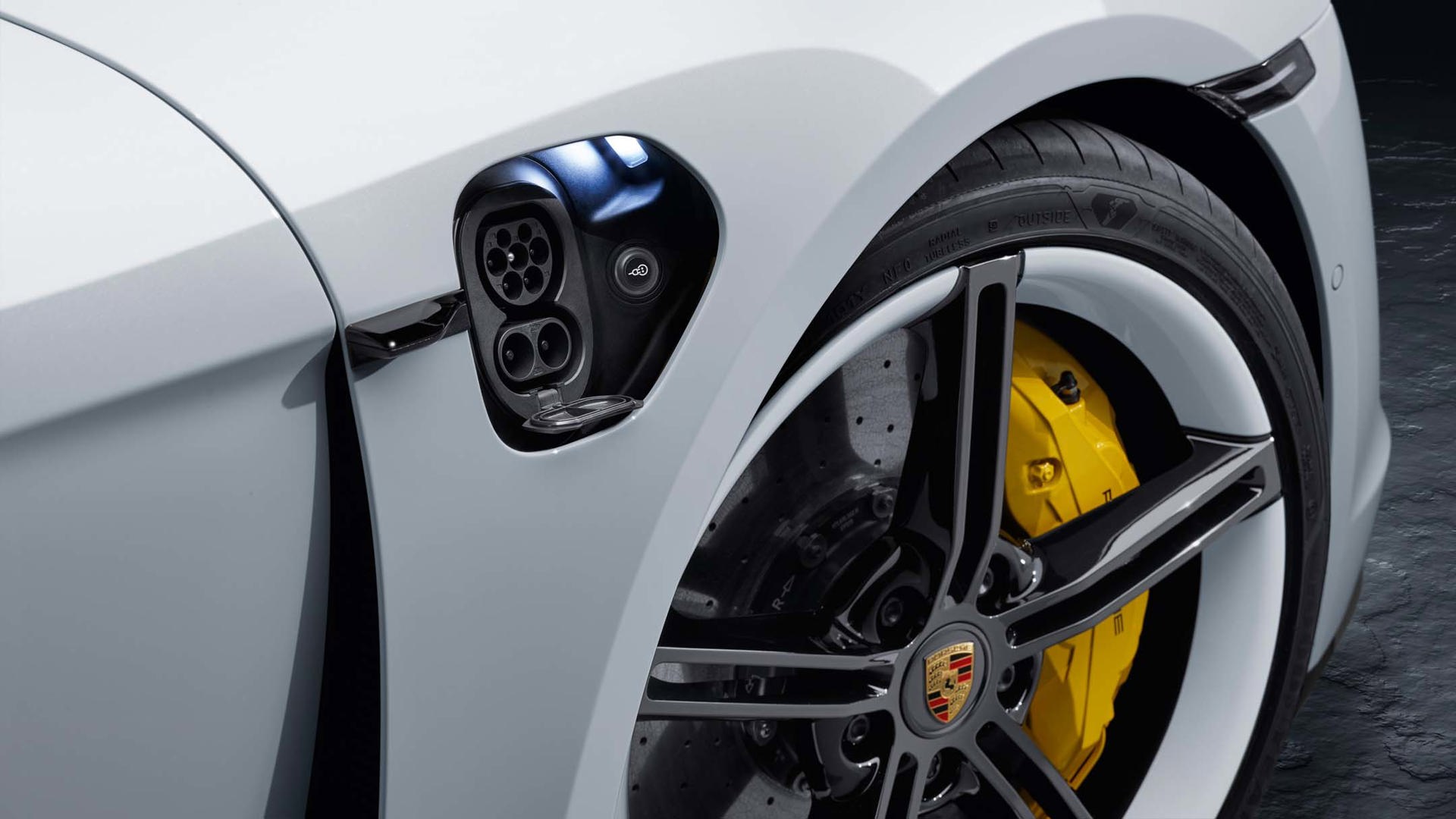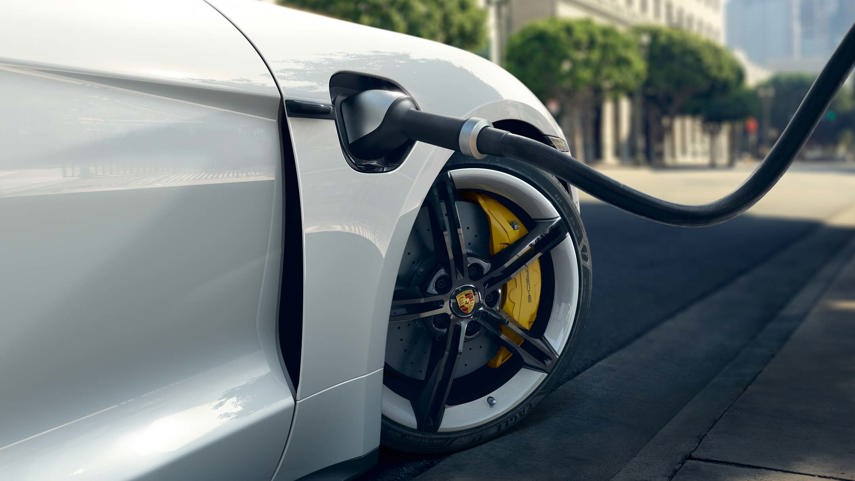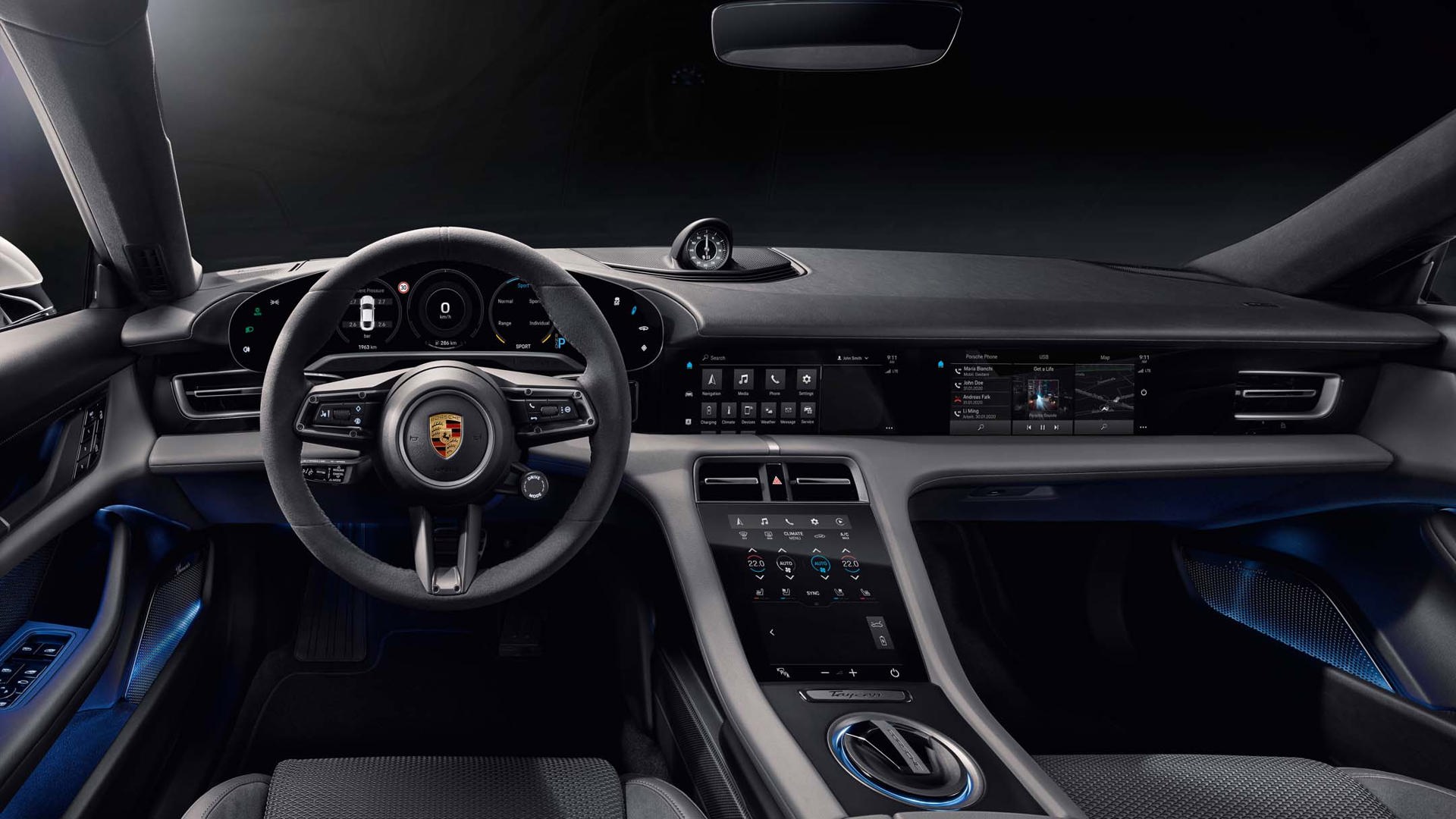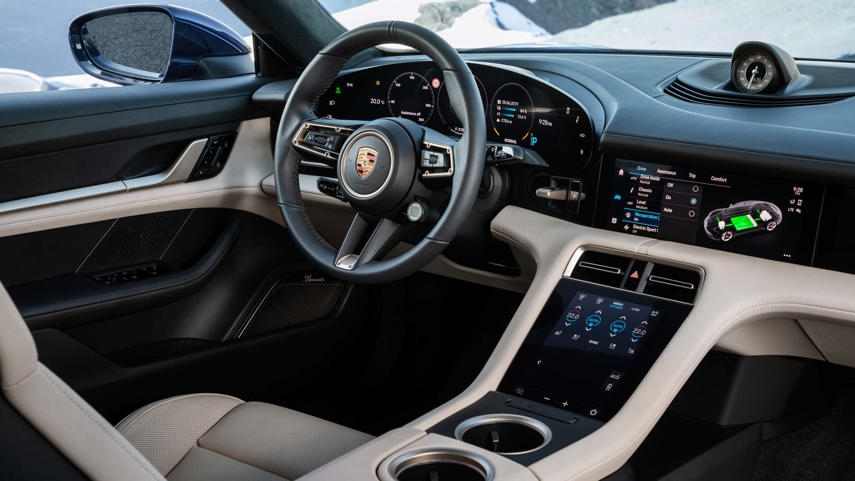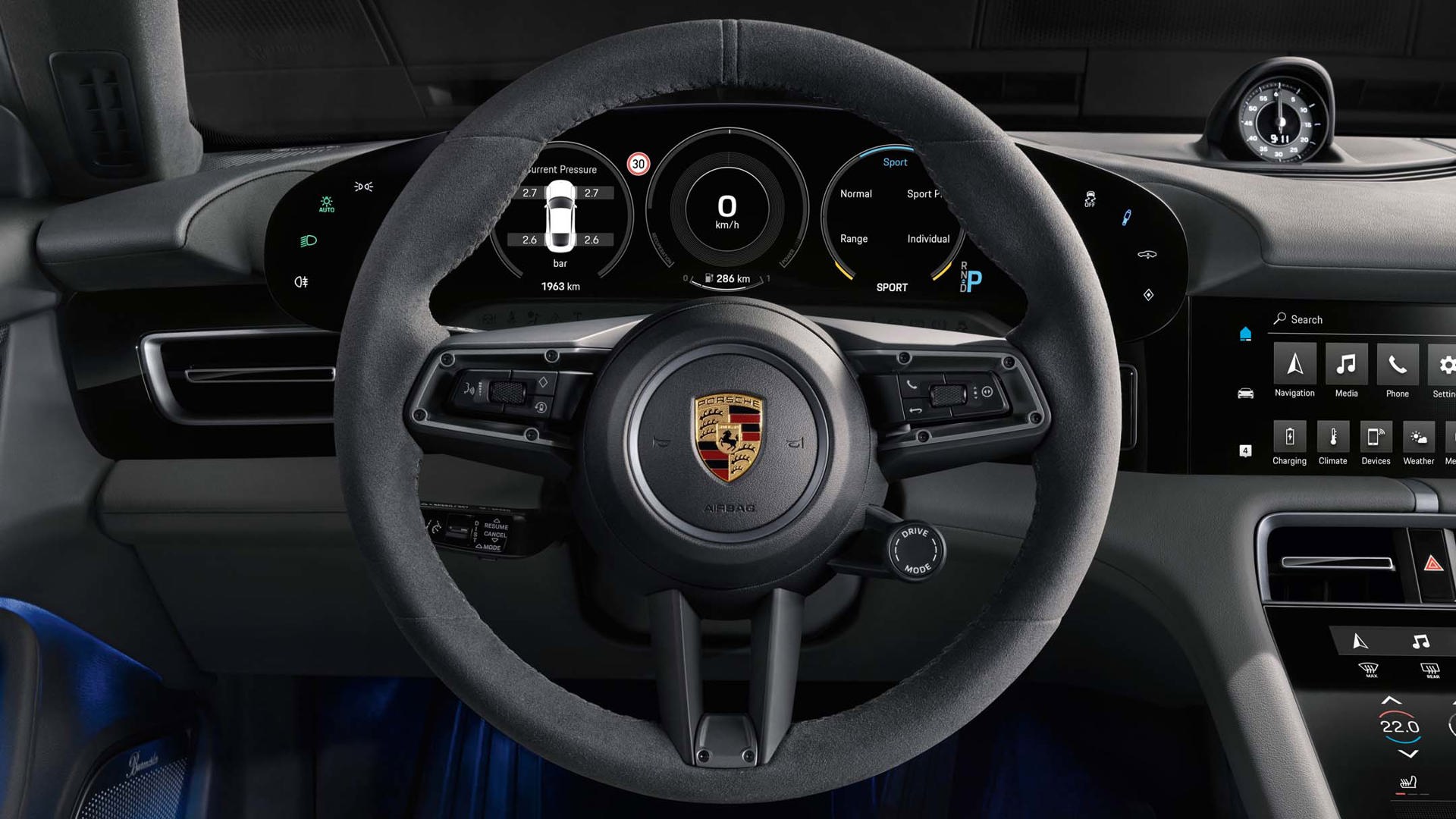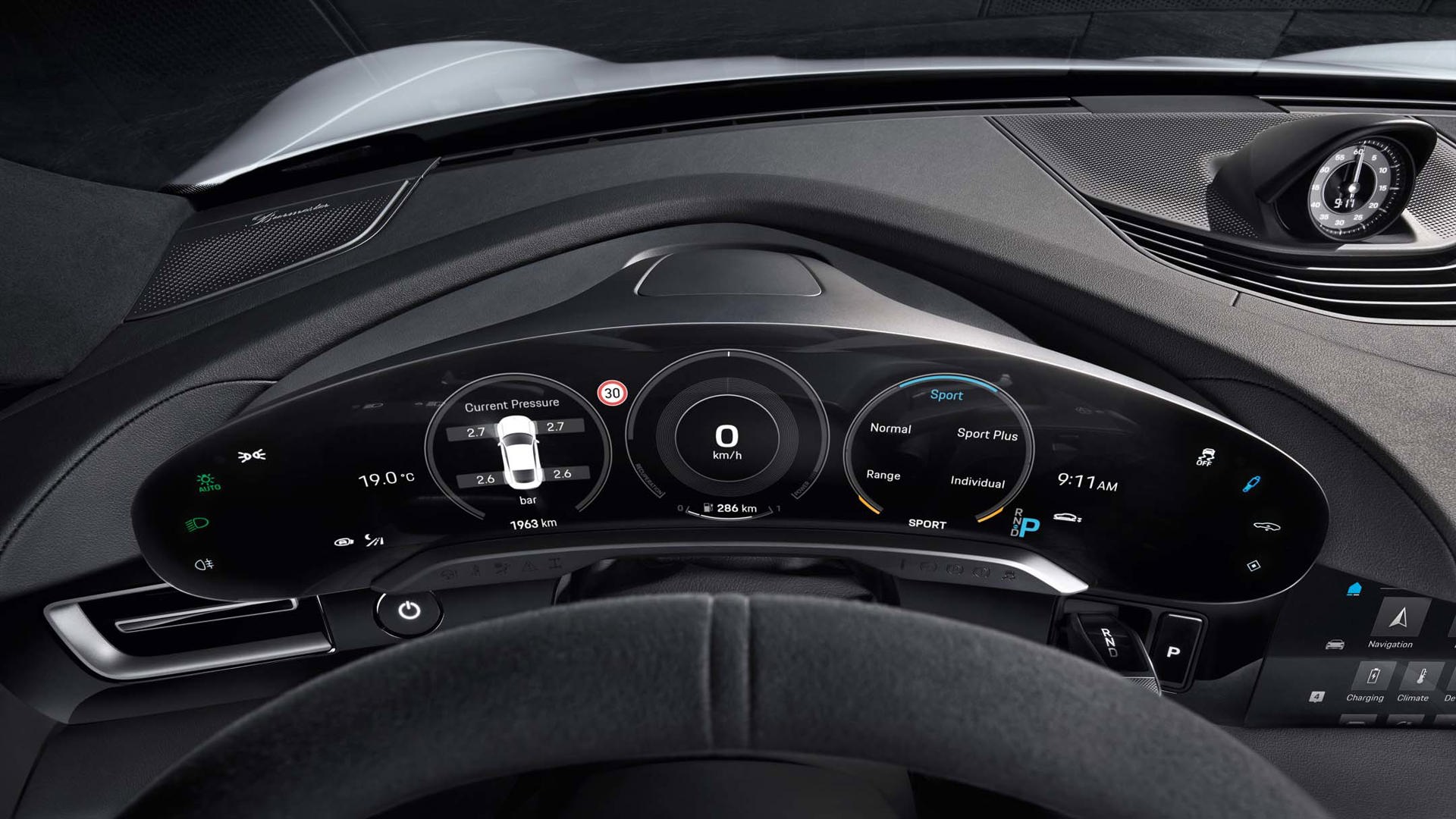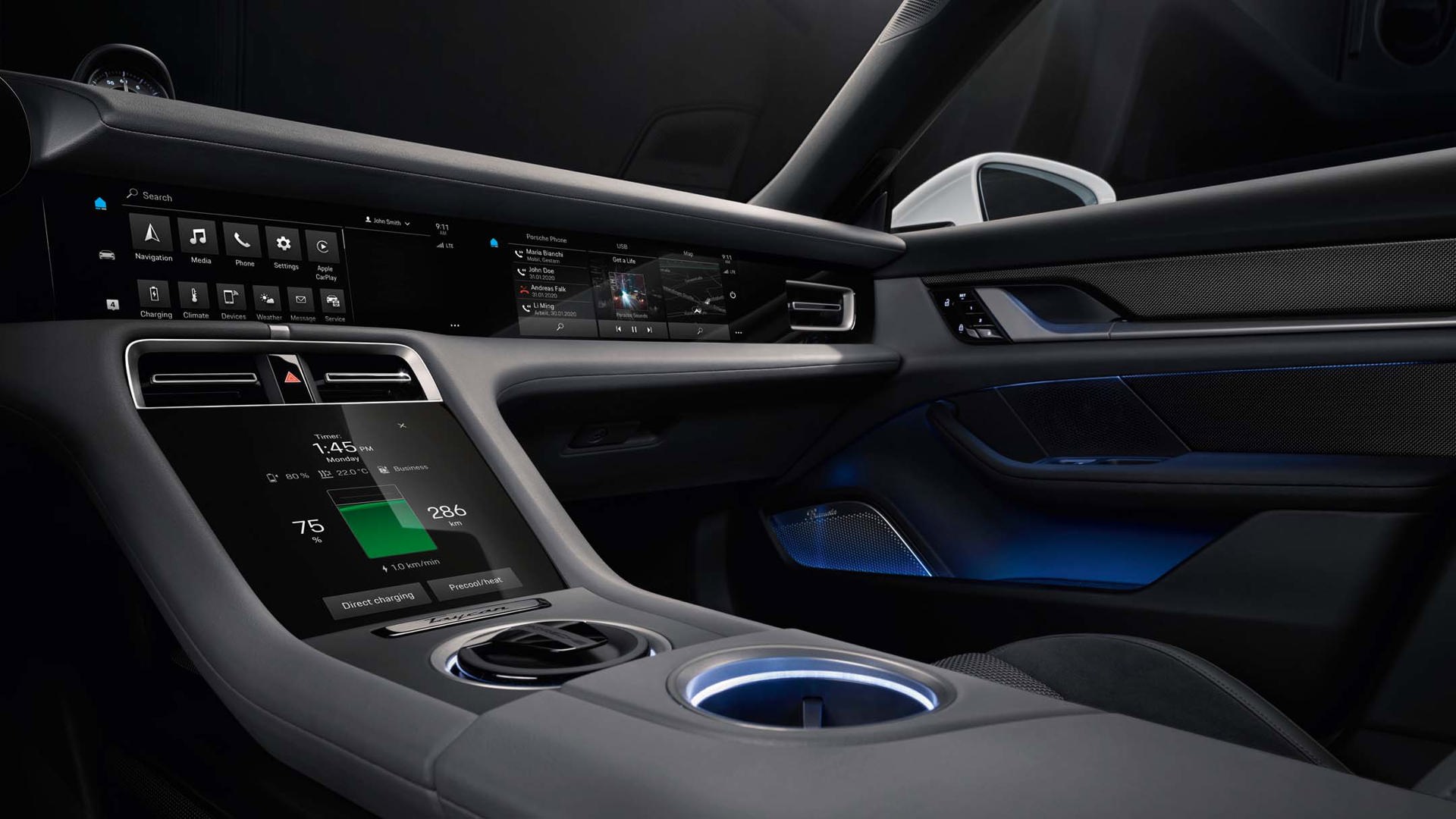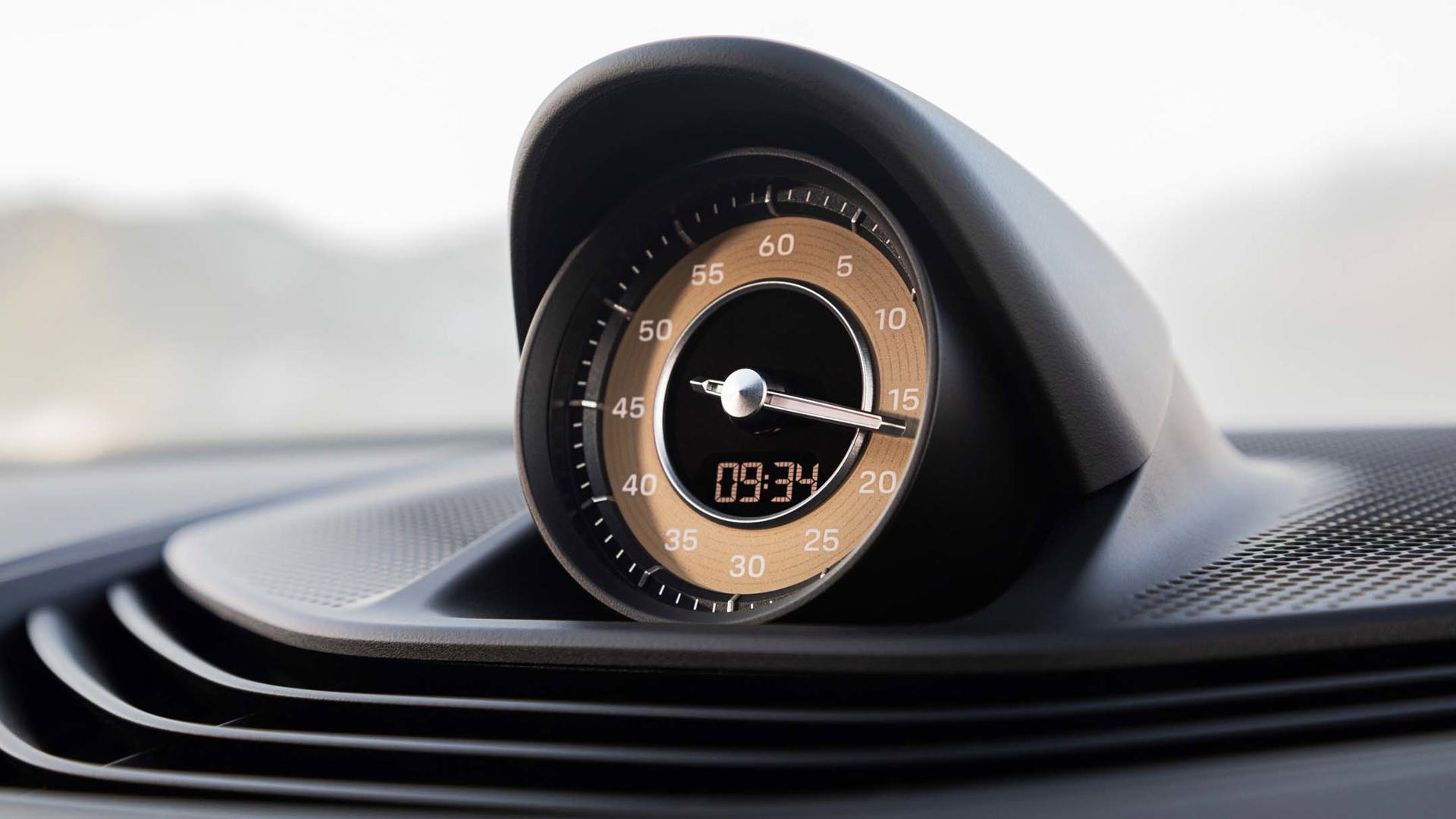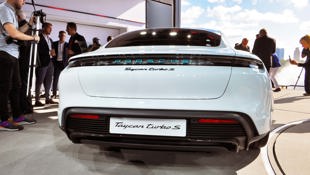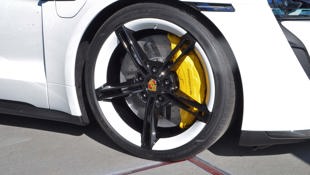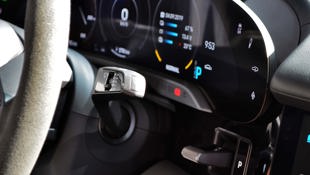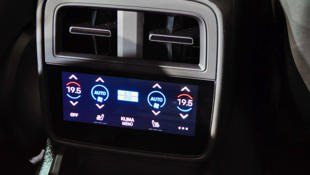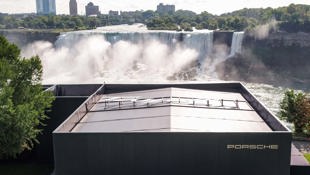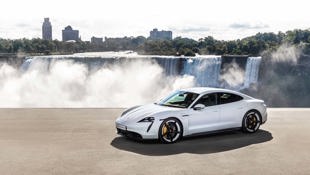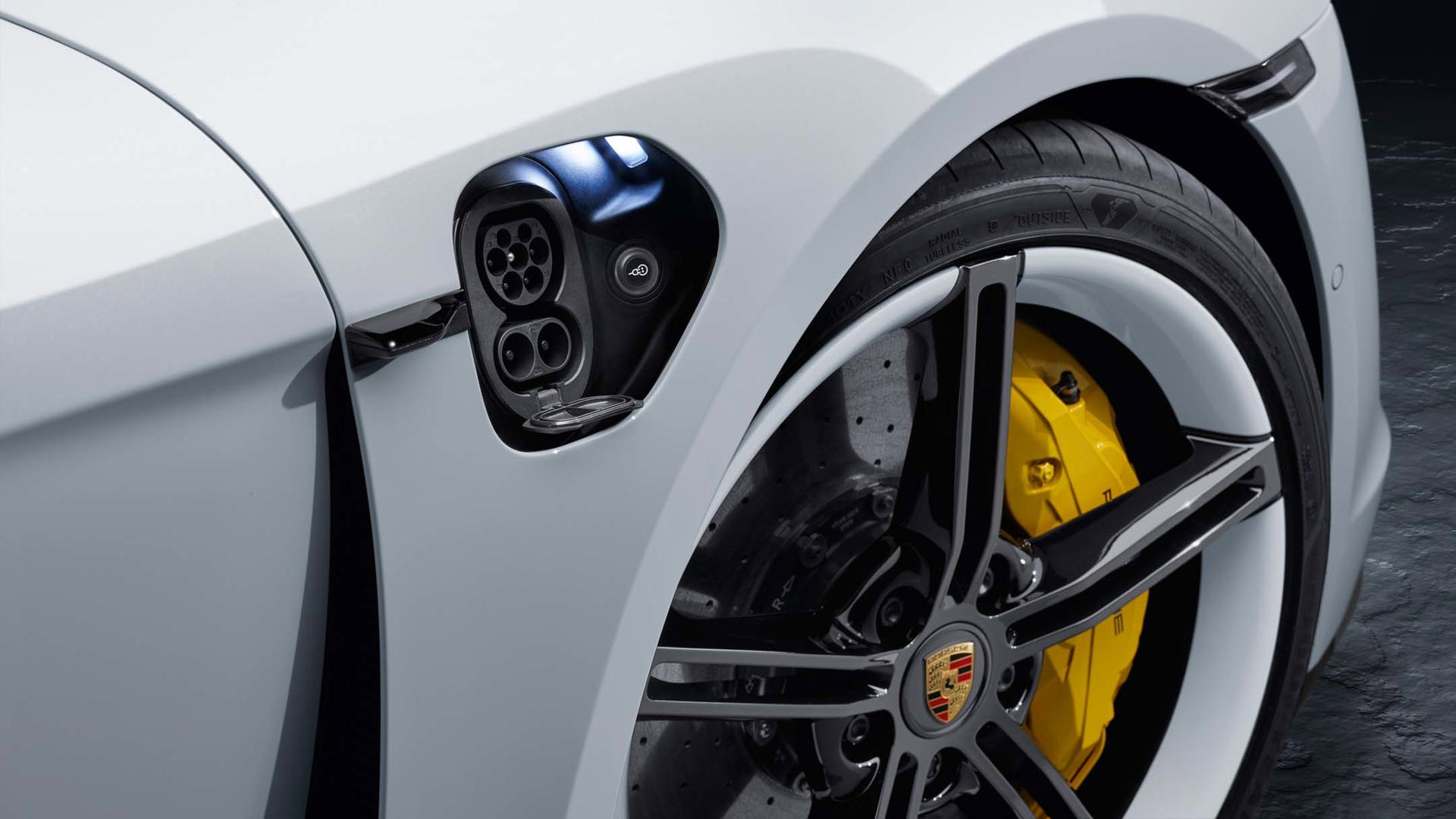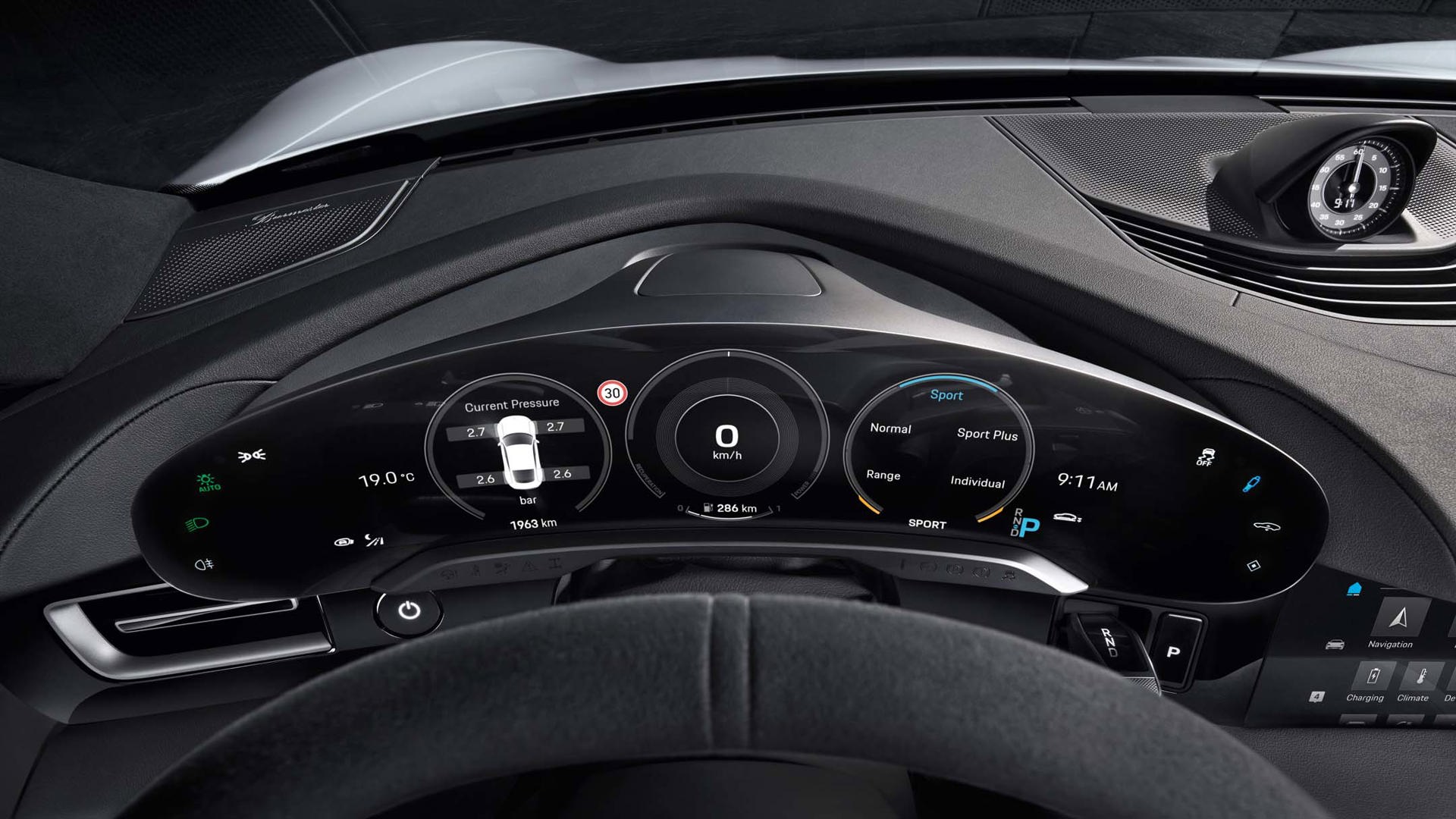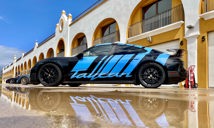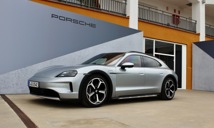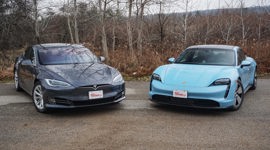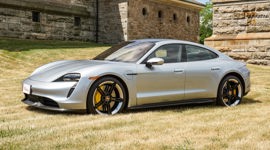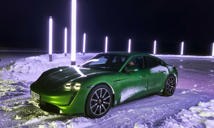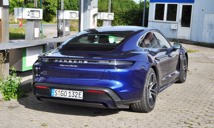There are six billion reasons that Porsche needs the Taycan to be a success – that’s the unprecedented cost, in euros, of its development over the past five years – the most the company has spent on any one model. And a massive risk for the relatively low volume luxury sports car maker, the company admits.
“The Taycan is a tremendous and exciting Porsche, but it’s also more than one new model,” said Porsche Cars North America president Klaus Zellmer, alluding to previously announced future iterations of the Taycan, such as a Cross Turismo wagon-like variant, as well as an upcoming all-electric Macan that will likely borrow heavily from the Taycan’s battery and battery management system. “It is a model of transformation: With it, Porsche enters the age of (pure) electrification.”
At a simultaneous world debut in Germany, China, and Niagara Falls for North American media, Porsche officially unveiled the all-electric Taycan four-door – and it promises quicker acceleration than any of its current top 911 Turbo sports car models. The Taycan will arrive next year in Canada as a 2020 model, though exact timing is yet to be confirmed.
It will be far from a mainstream model, even amongst luxury four-doors or its main rival, the Tesla Model S. While the fastest Tesla Model S starts at roughly $135,000, the Taycan Turbo will start at $173,900, the top-of-the-line Taycan Turbo S starting at $213,900. Following Porsche tradition, it seems likely that less expensive versions of the Taycan will arrive later, though there was no mention of other models to come at this simultaneous global reveal event.
The Taycan is the first four-doored response to the Tesla Model S, which shocked the luxury car segment in 2012 with its futuristic appeal, and in particular its flabbergasting Ludicrous mode’s straight-line speed. The Taycan’s 0–100 km time of 2.8 seconds for the Turbo S model is actually faster than the company’s fastest 911 Turbo model, and within a few tenths of the fastest Model S acceleration times as well.
But Porsche took various subtle swipes at Tesla by insisting that the Taycan offered not only stupendous performance, but stupendous repeatable performance, in reference to the Tesla’s oft-reported limit on its acceleration runs, or fit and finish or software issues. “Other EV cars decrease power if it has to accelerate many times in a row, but not the Taycan,” said Zellmer. “No other vehicle in Porsche’s history has been as vigorously tested as the Taycan – our customers expect a high-quality product, and it has to over-exceed expectations with (respect to) quality and reliability.”
Full technical details and specifications were unveiled at a separate event, but here are the basics: up to 750 hp and 774 lb-ft of torque on Overboost; a max of 450 km of range on the WLTP standard, which will mean slightly less on the more realistic EPA five-cycle standard used in North America. It also offers the ability to charge at up to a rate of 270 kW, so in ideal circumstances (a rare super-fast charger and reasonable ambient temperatures), the Taycan can add 100 km worth of range in five minutes, says Porsche.
The Taycan is the first series production car to offer a high-voltage 800 volt system, as well as the first BEV (battery electric vehicle) with a two-speed transmission for the rear axle on this all-wheel drive four-door. The underfloor-mounted battery of the Taycan is specially designed to allow for the curvaceous four-door coupe roofline. Another benefit of the battery placement, Porsche says, is a low centre of gravity – even lower than its 911, Porsche’s quintessential rear-engine sports car.
There was no driving at any of the reveal events – a drive event is happening in Europe in the next few weeks – but climbing into the Taycan for the first time, it certainly feels lower and sportier than its Model S rival, and more snug in width and headroom. The location of the battery allows the rear seat to be mounted as low as possible. There’s a surprising amount of room back there, but getting in and out may be tougher than with many luxury sedans or SUVs. Like the original Chevrolet Volt, however, there’s a surprising hump in the rear footwell, precluding a potential fifth passenger. The hump allows for more battery capacity, but prevents passengers from moving from one side to the other.
From a styling standpoint, it looks amazingly like the Mission E concept that Porsche unveiled almost exactly four years ago. The Taycan more closely resembles a four-door 911 than the larger Panamera, especially with its aggressive rear fenders that declare the Taycan’s sporting intent.
“We wanted to push the boundaries, but also stay true to our design heritage – this meant a low silhouette, as well as sports-car proportions,” said Ivo van Hulten, Porsche design director. “And I’m very glad that the Taycan has become the new Porsche icon that we wanted to create.”
Porsche Canada president Marc Ouayoun said that Canada is the fifth-largest Porsche market in the world, with strong pre-order demand for the Taycan. Canadian customers can access a hand-picked list of home charger installers, schedule a free home inspection of their electrical system, receive quotes free of charge, then select their preferred installer digitally.
Although Porsche can’t yet match Tesla’s extensive Supercharger network, as part of VW Group Canada, the company helped set up Electrify Canada, which will launch with 32 stations capable of DC fast-charging in BC, Alberta, Ontario, and Quebec – likely before the Taycan arrives next year. Ouayoun also made the surprising announcement that all 19 Porsche dealers in Canada will offer high-speed DC and regular Level 2 (240V) charging stations.
Symbolically, Niagara Falls was chosen as the North American location for its hydro-electric power production (and likely great visual of the car with the majestic waterfalls in the background), while the German introduction was at one of the continent’s largest solar farms, and in China, one of its largest wind farms. For Porsche itself, the company says its all-new production plant for the Taycan in Zuffenhausen will be CO2 neutral to start, while the car itself represents an entirely new direction for Porsche. It isn’t saying goodbye entirely to internal-combustion-only vehicles in the near future, but says it expects half of its vehicles to be electrified by 2025 (not all BEV, but including plug-in hybrids and hybrids as well).
